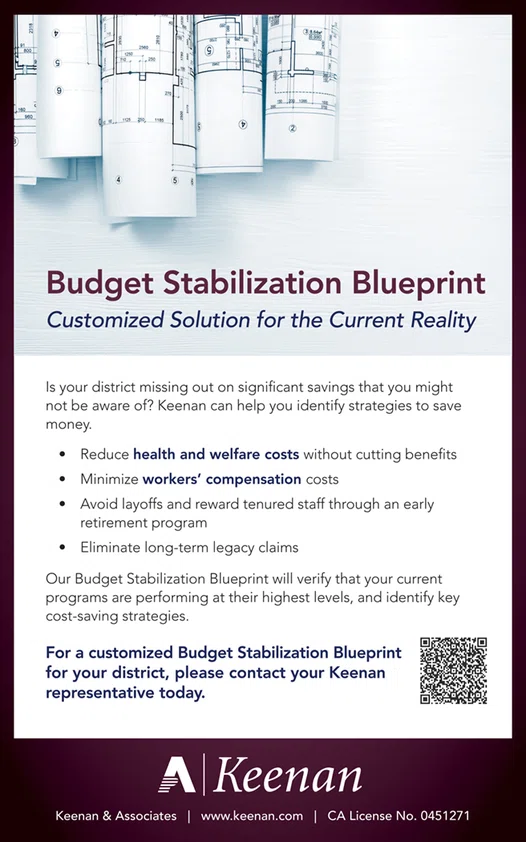CDPH requires universal masking
Guidance gives schools authority to enforce COVID safety requirements
July 26, 2021
Students and adult staff will continue to wear masks inside classrooms when school starts this fall, regardless of vaccination status, according to highly anticipated guidance from the California Department of Public Health.
The guidance released July 12 was designed to get students to full in-person instruction for as much time as possible, according to Dr. Naomi Bardach, a UCSF pediatrician and lead of the state’s Safe Schools for All Team, which is charged with school safety during the time of COVID-19.
As such, the new guidance removed the minimum physical distancing requirement, which prevented many districts from reopening in the 2020-21 school year.
Bardach said the guidance follows the CDC’s recommendation to use a “layered” approach by incorporating other mitigating measures like mask-wearing when physical distancing is not feasible.
“Indoor masking for us allows us to do full in-person instruction,” she told administrators during ACSA’s Legislative Lunch Break on July 13.
There are also changes in the guidance for quarantines. Schools with a universal masking policy can keep students in school with a “modified quarantine” as long as the exposure occurred between two masked individuals and the exposed students receive twice weekly COVID testing.
Bardach called this provision a “game changer” designed to keep students in school even if they were exposed, which previously would have required 10 days out of school.
“Our ability to have no minimum physical distancing allows kids to get in school, and the modified quarantine allows kids to stay in school,” she said.
Some media reports initially interpreted the guidance as requiring districts to ban students who do not comply with the mask requirement. Bardach said the CDPH clarified its guidance to say that districts maintain local control over how they enforce masking.
“The message to the educators: Do what you did last year,” Bardach said, adding that in 2021-22, schools have an alternative education opportunity (independent study) to offer families who do not wish to use masks.
On ACSA’s Legislative Lunch Break, Executive Director Wes Smith shared the initial reaction he is hearing from school leaders.
“In this scenario, there was going to be no clear victory for all of our members, because our members have had different opinions about this guidance for quite some time,” he said.
Smith reminded viewers of ACSA’s advocacy since the beginning of the pandemic that has sought to get state leaders to issue clear guidance. “Since the beginning of the pandemic, our members were left on an island, if you will, to make these decisions about school closures,” he said.
He also acknowledged the intense blowback, including death threats, that administrators are facing as they enforce state-issued public safety rules.
“We know why this is. The pandemic is absolutely a public health crisis. We know Californians have suffered including with their lives. This is serious. But we also know as much as it’s a public health crisis, it’s a political crisis,” he said. “We know in some of our communities whether to wear a mask or not to wear a mask is not so much about the science as it is about the political dispositions, and those politics land squarely on the plates of our superintendents, district and county leaders.”
Smith said that in issuing this guidance, state leaders accepted the political consequences to make a decision they feel is in the best interest of students.
Bardach said the universal masking requirement took “social-emotional” factors into account and was aimed at making sure everyone felt supported and safe on campus.
“There will be mixed populations of students as well as teachers who are vaccinated and unvaccinated, and you can imagine that there could be very detrimental effects where if you have a mixed classroom or a mixed school … and you have this very visible difference,” she said. “It creates two classes of people, it creates a potential for differential treatment, bullying, stigma, bias — there’s a lot of unintended consequences of doing that.”
Other major updates to guidance include:
Cleaning — De-emphasizing sanitation and returning to standard cleaning.
Ventilation — For indoor spaces, ventilation should be optimized, which can be done by following CDPH Guidance on Ventilation of Indoor Environments.
Nutrition — Food no longer needs to be individually packaged.
Outdoor masking — Masks are not required outdoors.
Screening — There is no recommendation for COVID symptom screening for students, staff or visitors.
Sports and activities guidance is forthcoming from the CDPH.
Contact Us
www.acsa.org
© 2020 Association of California School Administrators




